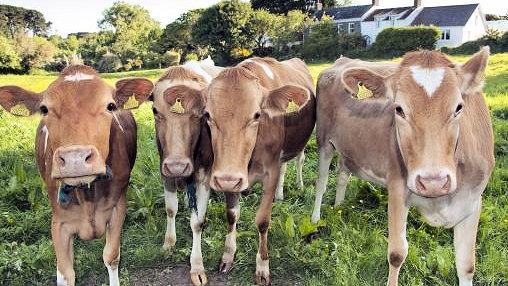The wholesale price for milk will rise by 12.6% next month, to help reduce the operating deficit at Guernsey Dairy and offset increased costs farmers have incurred.
The move comes in response to significant increases in production costs both for the dairy and for farmers, and is the first such rise in more than a year. The last wholesale price change came in January 2022.
As part of the increase, farmers will see a 10% uplift in the price they are paid for their milk, to reflect increased production costs incurred in 2021 and 2022. It follows as independent review of the profitability of local dairy farms, which concluded the producer price of milk had to increase for them to have a sustainable commercial future.
The increase is separate to the emergency funding for 2022 and 2023 agreed by the Committee for the Environment & Infrastructure and Policy & Resources Committee. That package, equivalent to 6.4p a litre over the corresponding period, is specifically to compensate for the sudden, sharp rise in the cost of cattle feed and fertiliser as a direct result of the war in Ukraine. Those additional costs are not being passed on through the price of milk.
Guernsey Dairy has also seen significant inflationary cost increases in raw materials, packaging, consumables, and energy since Brexit and following Russia’s invasion of Ukraine.
Even with the wholesale price increase, it is still forecast to make a trading loss in 2023.
States’ Trading Supervisory Board member Stuart Falla, who chairs the Dairy Management Board, said despite the recent emergency payments, milk price rises in recent years reflected a reduction in financial support that the States provides to farmers.
“In the past, the States provided far more by way of direct financial support for the local dairy industry. That was in recognition of the important role that farmers play, in managing the countryside and maintaining the Guernsey herd, which we all benefit from, whether we buy milk or not.
“That support has been significantly reduced in recent years, and its value continues to be eroded each year by the impact of inflation. In 2001, that financial support was £2 million, which in real terms would be equivalent to around £4 million now. However in 2023 the figure will be just over £1 million.
“The result is farmers are having to rely more on income from their milk, and that is being passed on to consumers through the retail price, which we have seen increase significantly in recent years.
“The States need to urgently decide whether or not maintaining Guernsey’s countryside through the continuation of dairy farming in Guernsey is a prize worth paying for directly from general revenue as they did in years gone by.”
The Committee for the Environment & Infrastructure is currently conducting a detailed review of dairy farming, to identify a sustainable model and viable long-term plan for the local industry.
The wholesale price is what Guernsey Dairy charges milk distributors, who in turn set their own selling price for milk they supply their customers. It is estimated the cost to the consumer for full cream, low-fat or skimmed milk currently ranges from around £1.40 a litre to £1.55.
The wholesale price rise will come into effect from 12 March.
















